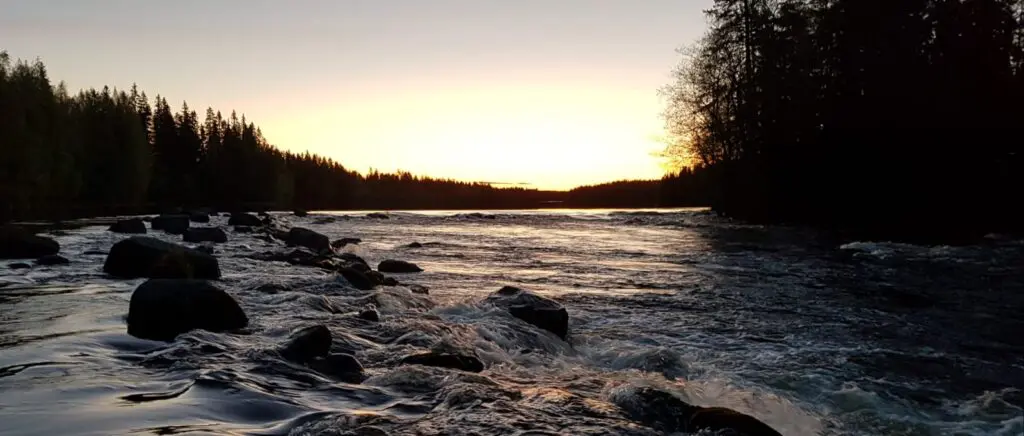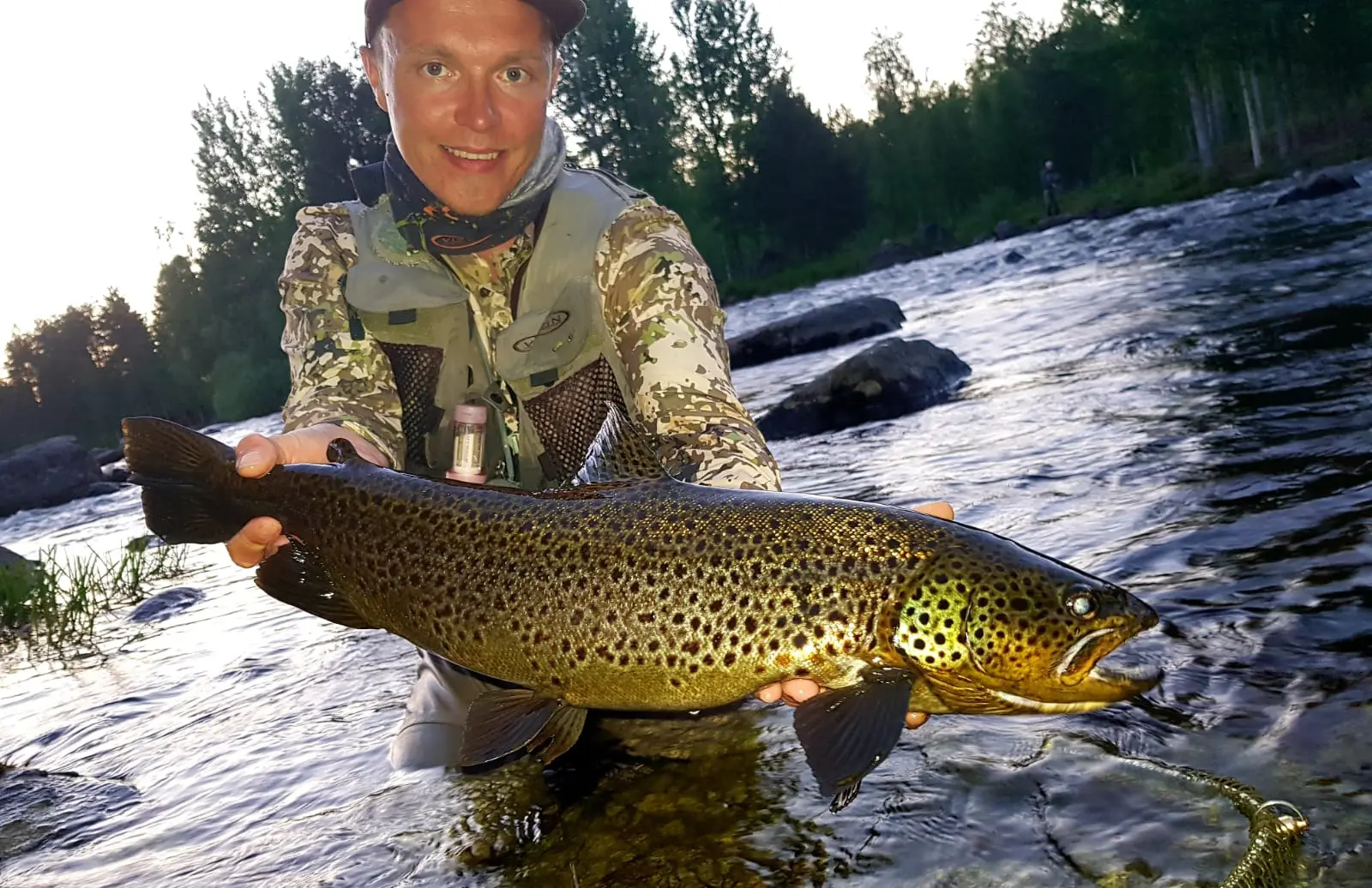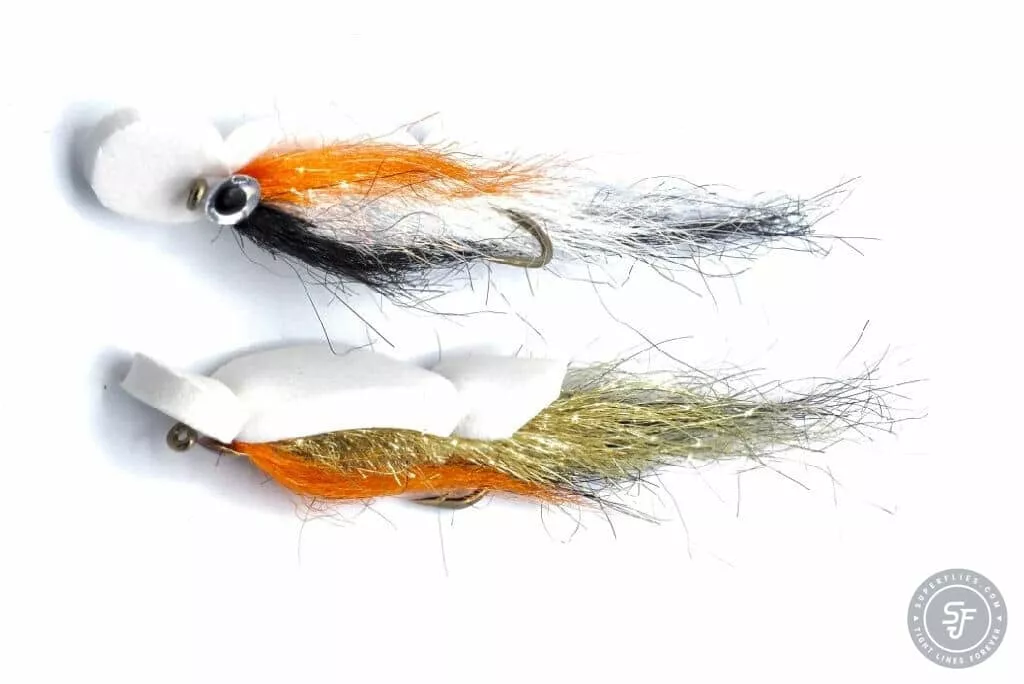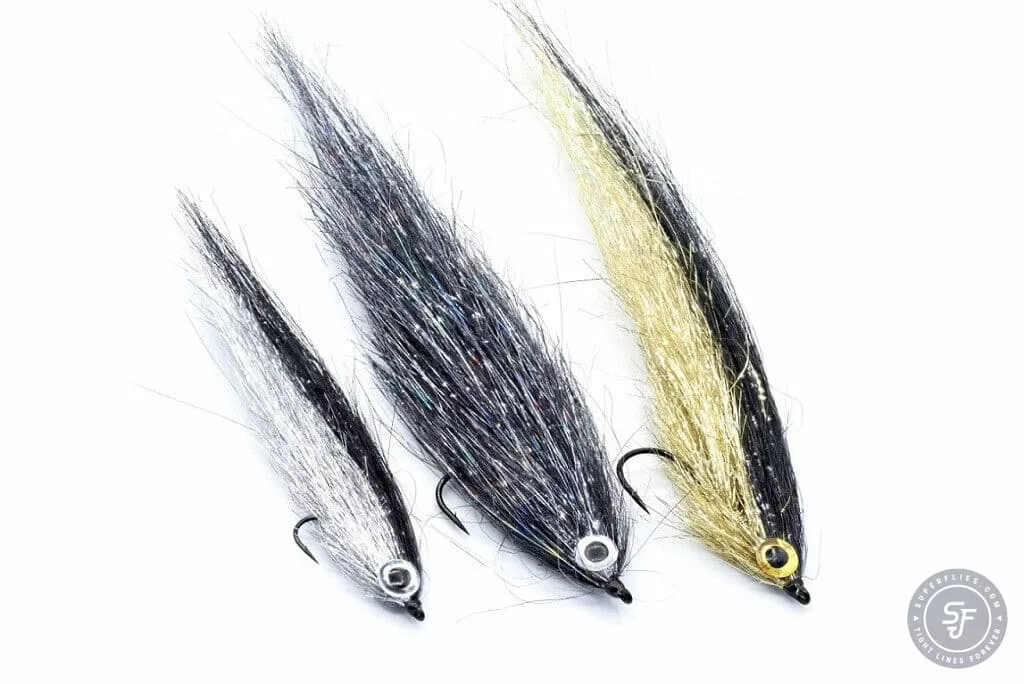Superlifes » Trout fly fishing in Central Finland – Streamer tactics during the famous baitfish run
26-04-2021

When competing in international fly fishing competitions, Jari Heikkinen from Team Finland usually relies on nymphs and dries. But it’s streamer fishing back home that he grew up with and that he still often practices when fishing the legendary rapids of Central Finland. The region is especially known for a unique yearly phenomenon – the early season baitfish runs. When schools of bleak, cyprinidae and perch enter the rapids, it triggers a 1,5-month brown trout feeding frenzy. We had a chat about Jari’s favorite streamer techniques and flies for his local waters.
Text: Antti Kalske
Pictures: Jari Heikkinen
For many, brown trout streamer fishing might mean downstream casts at 45 degree angles or stripping flies cross-current. Jari Heikkinen, part of Team Finland that finished 4th overall in the 2019 World Fly Fishing Championships, goes the other way. Literally. But before going into techniques, it’s worthwhile doing a short introduction to the special characteristics of the areas where Jari mostly fishes – and where his fishing style has been perfected.
Central Finland has several famous river systems, for example the Rautalammi, Saarijärvi and Viitasaari routes. Some of the most famous rapids include Kellankoski, Siikakoski, Äyskoski and perhaps the most legendary of all, Huopanankoski. Jari’s home rapids are Puuskankoski ja Läsäkoski, but his experience is that the same streamer techniques apply throughout the region, although the character of the rivers ranges from pocket fishing fast currents to calmer water.
What makes streamer fishing so unique in this region are the seasonal baitfish runs. All hell breaks loose when 10-20 cm protein packages make their annual pilgrimage from lakes into the rapids. Expect seething night time surface action as big browns chase and annihilate schools of bleak, perch and roach. That also means it’s time to revisit your approach to streamer fishing.
The spring and summer season usually starts in early May, when water temperatures rise to about 6-7 °C. This launches the golden era of streamer fishing, with baitfish runs entering the river in pulses. “Roach are first in line, followed by other cyprinidae and perch. The crazy climax of the party is when bleak enter the rapids in large numbers at around 10-12 °C,” Jari explains the rhythm of the season. “Streamer fishing is hot until about mid-June, when caddis and mayfly hatches win over the trouts’ attention.”
During this time, Jari has a clear concept he swears by. “I basically only cast and move upstream, dead drifting with a floating line. I keep slight contact with the fly but don’t create any extra movement by stripping. Very similarly to upstream nymphing, but with long casts and close to the surface,” he describes. Mending is key in ensuring the right kind of drift and contact, which is why Jari opts for a long-tapered fly line. The technique has proved extremely effective, although he has tried out everything imaginable like weighting the leader and flies. However, the best results have come by dead drifting unweighted streamers.
It’s worth stressing that the surface fishing with unweighted streamers Jari describes works best from dusk until dawn. During the day, the same upstream tactics apply, but trout are in siesta mode and the flies usually need to swim deeper. That also means you need to be able to sight them in order to serve your fly close to the passive fish. Another option is to try the complete opposite and forcibly strip a floating Surffilauta across the current – splashing water and creating mayhem. This can activate trout to at least attempt a strike, but you should be mentally prepared for a fair share of misses.
“People often say that fish don’t hook well when fishing streamers near the surface. I think this has a lot to do with the technique used,” he adds to the benefits of upstream dead-drifting. “With a tight line cross-current or downstream, you’re bound to lose more fish. Odds greatly improve when the fly is flowing freely towards it.”
The surface breaks with a splash, a beast of a trout reveals itself and adrenaline rushes. What’s your next move?
Another aspect where Jari wants to challenge anglers on is carefully planning their approach to the best holes and pockets – let alone sighted fish. “You only get one first cast, so you better make it count. You are always most likely to get a to take the first time the fish sees the fly,” Jari advises.
That’s why it pays off to spend a few thoughts on your game plan – even with the adrenaline in your veins.
In case the first cast doesn’t produce, he does have a few other tricks up his sleeve. “As mentioned, I always start with an upstream dead drift. If I’m confident there are fish in a certain spot, I’ll try from a different angle next, casting cross-current,” Jari says. “My last resort is to simply move upstream to the fish and hold the fly in front of it. That often turns the tables but if not, it’s wiser to rest the spot and maybe come back later than desperately keep beating the pool.”
In fact, Jari often starts his sessions by trying to spot fish without even trying to cast at them. “Before the best bite is on, it pays off to do a bit of scouting and concentrate on finding spots that are holding fish. When the action starts, you know where to go later in the evening. You’ll then get to cast to active fish in the best hot spots, without the fish having been distracted by your flies earlier.”
But when does the action start?
Unsurprisingly, the best fishing time is from evening to morning. “But this time is further divided into several very different segments,” Jari thinks. That means lots of sleepless nights for streamer fanatics. “Trout become active at around 10 in the evening, which is when schools of baitfish enter the river. They only hold there for the night, and return to lakes and backwaters to spend the day.” Trout like to hold near large rocks waiting for their prey to arrive. Those are also the most obvious places to target your casts.
Once bleak make way into the rapids, the surface becomes alive as trout aggressively attack everything that passes as protein. You might think it can’t get any better than this. “Actually, the late evening or early night can be quite challenging, albeit exciting with splashes echoing everywhere. Trout are very active, but there is just such an ample supply of baitfish around that the chance of your fly being the lucky lottery winner isn’t particularly high.” Places to look for are tails of pools and calmer rapids between two stretches of fast white water, where baitfish first enter the hunting grounds.

If you are willing for a full-on night shift, it gets better. “At the break of dawn, around 3-4 in the morning, there is usually another clear spike in activity. Another prime time is at seven-ish, when the sun is already up.” There is also a clear logic for the pattern, as Jari explains. “Towards the morning, the baitfish that came into the rapids in the evening start making their way out. That means that the trout are still in feeding mode, but with less fish around competing for attention.”
Jari has a few favorite models that he uses in different sizes. Surffilauta, “surf board”, is a gurgler-type floating foam-back streamer that is extremely exciting to fish with. “I have Surffilauta in several different sizes, between 5-15 cm. Silver and black are my go-to colors and #2 is my most common hook size,” he reveals. “Fish it upstream on the dead-drift. Even if you don’t hook fish, you’re at least likely to spark some activity and make trout reveal their locations.”
The same goes for his other trusted pattern, Supertinseli. “Gold has a reputation as a superior color, as it matches nicely with the peat-colored water,” Jari says, noting that many seem to have a similar love-hate relationship with the fly as with Squirmy Wormies, Woolly Buggers or perhaps Frances in salmon fishing. Controversy is a sure sign of high effectiveness. “Despite the popularity of gold, my own top choice is silver, with black and orange & gold my other favorites in hook sizes #2-6.”


Jari also recommends carrying a perch imitation and “something black”. Not much else is needed during these months. From midsummer onwards, streamers can still be effective. But according to Jari’s view, they work better earlier, when fish haven’t yet been exposed to them and there are also limited insect hatches.
That said, many big August browns have gone for a dark streamer. Size down during the end of the season – and hold on tight.
Gear: 9’ #6 rod, floating line with a long tapered head and a 8’ leader. Jari builds his leaders from sections of 0,50mm and 0,45mm line, followed by a tippet ring and 0,40mm tippet. You can go for a 10’ #7 setup, but a shorter rod might come in handier with trees and bushes often reaching the waterline.
When to go: Early May to Midsummer
What look for: Tails of rapids in the evening when baitfish enter the river, around rocks and sighted fish
Flies (sizes #2-6, 5-15 cm, sometimes even larger):
1. Surffilauta Silver
2. Surffilauta Black
3. Supertinseli Silver
4. Supertinseli Black
5. Supertinseli Gold & Orange
+ Perch imitation (Jari uses a Spuddler)
+ Since writing the article, we have added Jari’s own signature fly, Jarpan Kettu (“Jarppa’s Fox”) to our selection